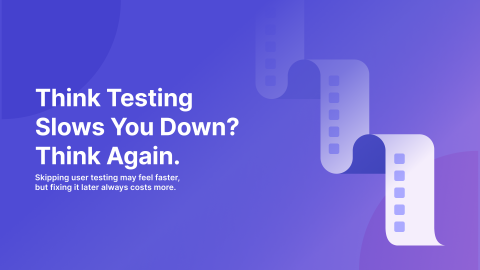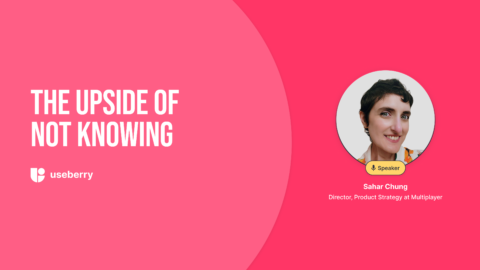Success can be a double-edged sword. For thriving SaaS businesses, the very factors that led to success such as solid user experiences, loyal customers, and effective strategies can create a false sense of security. Why do you even need user testing now?
When things are going well, it’s tempting to avoid rocking the boat. After all, “why fix what isn’t broken”. But this mindset can lead to stagnation, missed opportunities, and ultimately falling behind in a competitive market.
This is where user testing becomes indispensable. By consistently seeking feedback and staying attuned to users’ needs, even successful businesses can maintain their edge and keep delivering value. Let’s explore why user testing is a critical tool for businesses that are already performing well and why it might just be the best way to future-proof that success.
Complacency: Success’s Silent Killer
History teaches us that complacency can bring even the mightiest down. A compelling example is the theory of why great empires collapsed. By the time trouble reached the capital, it was often too late to act. Leaders, removed from the reality on the ground, became blind to the warning signs. Similarly, in business, thriving organizations can fail to notice the small cracks forming in their customer experience until those cracks grow into unmanageable gaps.
In SaaS, this might look like:
- Relying on outdated design trends while competitors embrace modern, user-friendly interfaces.
- Assuming loyal customers will tolerate friction or inefficiencies because “they always have.”
- Missing shifts in user preferences, like the rise of mobile-first designs or accessibility standards.
User testing serves as the modern-day equivalent of scouts on the ground, providing real-time insights and preventing leaders from becoming too detached.
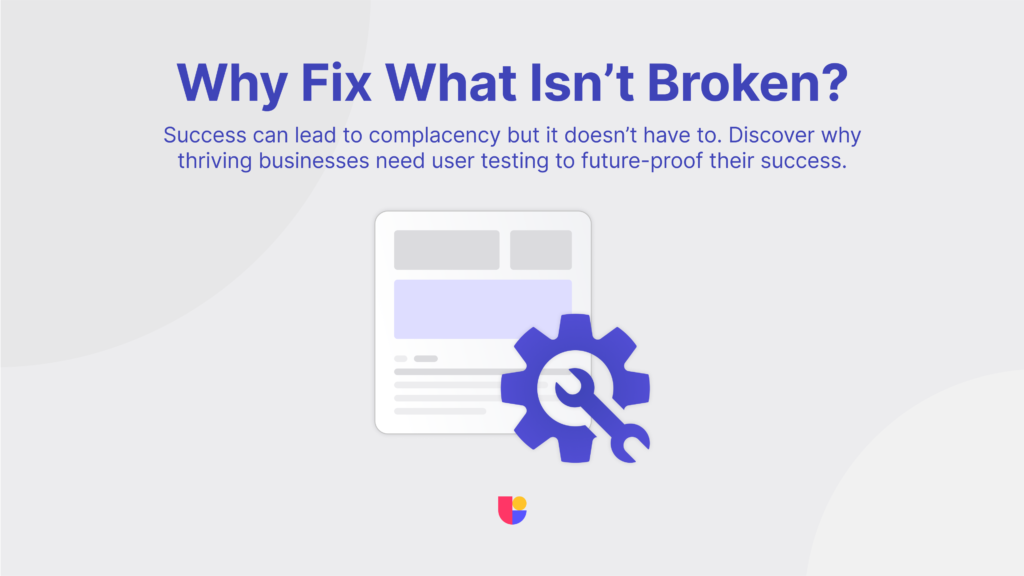
The Fear of Disrupting Success
One of the biggest challenges for successful companies is overcoming the fear of change.
When everything seems to be working, proposing updates to a product or interface can feel risky. Will a redesign confuse users? Could a new feature disrupt what’s already working well?
This is where user testing counteracts hesitation and turns it into confident action. With data-backed insights, teams can:
- Experiment safely through A/B testing, gauging user reactions to new features without fully committing.
- Understand how changes impact usability and engagement, reducing the risk of alienating loyal customers.
- Persuade resistant stakeholders with clear evidence that adjustments align with user expectations.
Instead of making decisions based on gut feelings or internal assumptions, user testing ensures every move is informed by real feedback. It’s not about disrupting success; it’s about ensuring that success continues.
You can take a look at one of our recent customer stories where we review how user testing impacted an already successful business here – A/B Testing Boosts MEWS Conversions by 25% with Useberry.
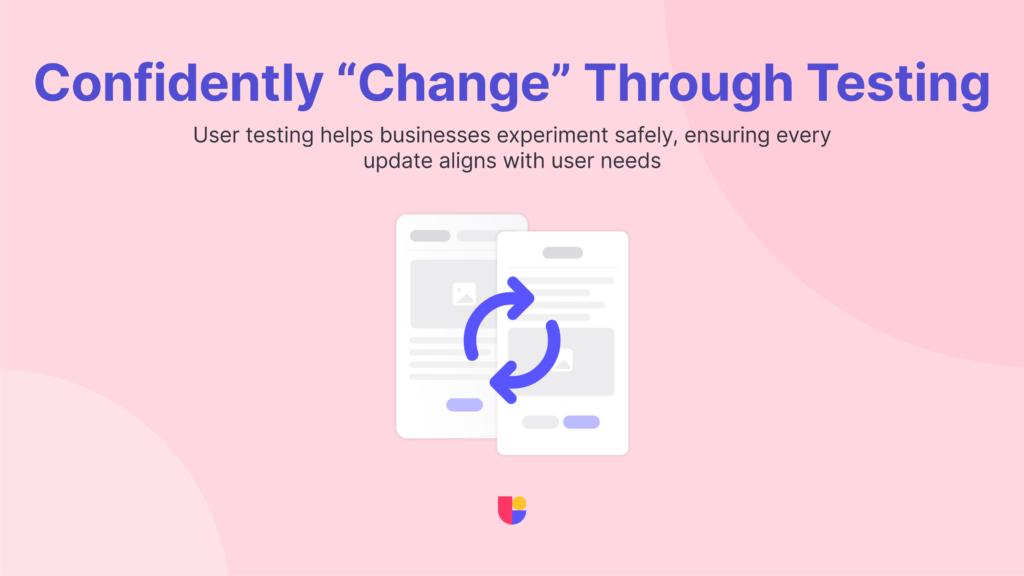
Proactive Feedback with User Testing: Staying Ahead of Trends
User expectations are never static. What’s considered intuitive or delightful today can feel outdated tomorrow. Take, for instance, when there was a shift from realistic element designs to flat interfaces, or the growing demand for dark mode across apps. Businesses that waited too long to adapt to these trends found themselves with an outdated look and lacking user experience. Forcing them to play catch up and fall behind again as trends continue to shift.
Regular user testing keeps businesses in sync with emerging needs and preferences. Here’s how:
- Spotting Blind Spots: Users often experience products differently than internal teams anticipate. Testing helps uncover friction points that may not be obvious.
- Tracking Shifting Preferences: By continuously collecting feedback, businesses can stay ahead of trends rather than playing catch-up.
- Identifying Growth Opportunities: Testing can reveal features users want but aren’t currently available, providing a roadmap for innovation.
In short, user testing doesn’t just fix problems, it highlights opportunities to improve and grow. If you are looking for a more extensive look, we recommend checking out Guide to Effective User Testing in the UX Industry next.
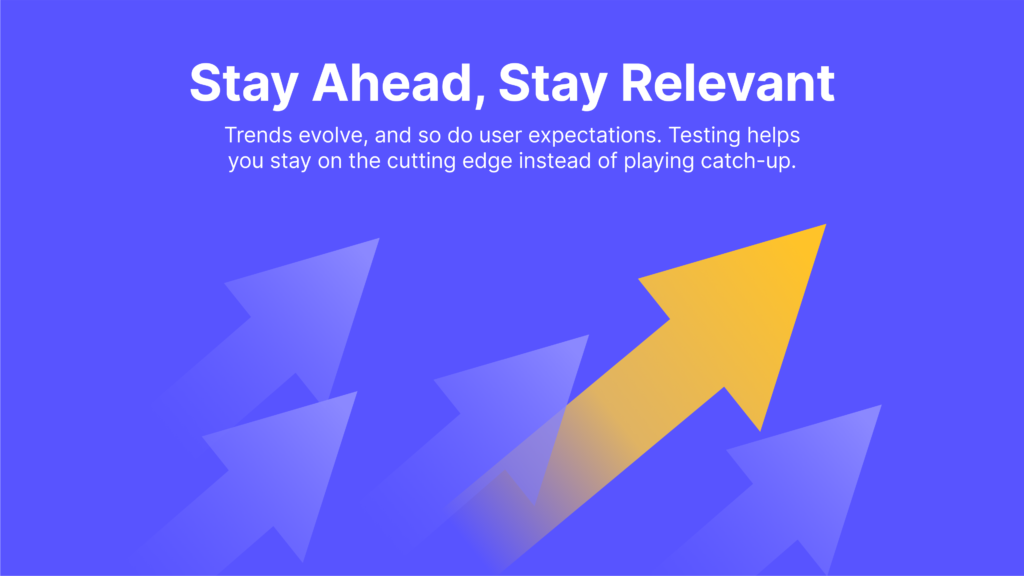
Data That Breaks Down Resistance
One of the most frustrating barriers to progress in successful companies is entrenched decision makers. Management can resist change because they are convinced that current strategies are good enough.
User testing flips this narrative by providing clear, actionable insights. For example:
- A company hesitant to update its onboarding flow might discover through testing that a large percentage of new users drop off due to unclear instructions.
- A visually outdated interface might be shown to reduce conversion rates even if it is perfectly “functional”, convincing even the most skeptical stakeholders of the need for a refresh.
Keep in mind that reliable data doesn’t just convince management to act, it also ensures teams are aligned on why changes are necessary.
How SaaS Businesses Can Leverage User Testing
User testing is especially critical for SaaS companies, where the customer experience directly impacts subscription renewals and retention rates. Here’s how to implement it effectively:
- A/B Testing Features: Test different versions of a feature or design element to see what resonates most with users. For example, does a minimalist navigation bar improve usability compared to a more feature-rich one?
- Collect Ongoing Feedback: Use tools like surveys and live tests to understand how users interact with your product over time.
- Prioritize Key Moments: Focus on high-impact areas, such as onboarding, checkout flows, or dashboard interfaces, where small changes can drive big results.
- Ask the Right Questions: Beyond metrics like “Did you like this feature?” dig deeper: What did you expect to see here? What made this experience frustrating?
The insights gathered from these efforts will ensure SaaS businesses stay agile, relevant, and user-focused. You might find the following tips from our Head of Design especially useful 10 UX Hacks that You Wish You Knew Sooner while incorporating user testing and UX into your design flow.
The “Can’t Fix What You Don’t Know” Principle
Here’s another perspective: Imagine you’re navigating a vast forest without a map. Sure, you might be headed in the right direction, but without a clear sense of where the obstacles lie, you’re bound to stumble. User testing acts as that map, ensuring that businesses move forward with purpose. By seeking out potential pitfalls, listening to users, and making adjustments early, businesses reduce the risk of costly missteps. It is easier to pivot when you have a clear understanding of what needs to change and why.
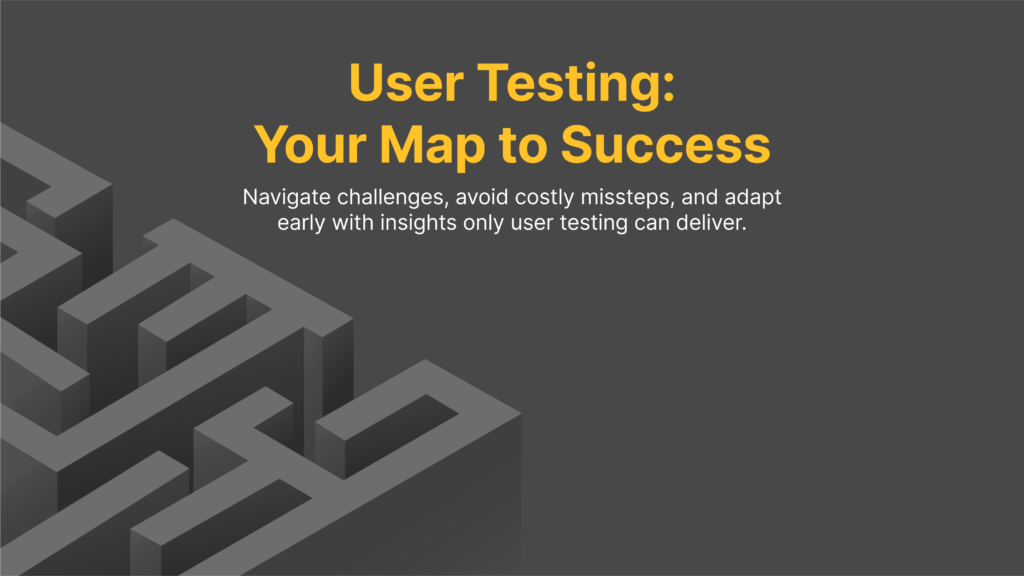
Closing the Gap Between Success and Innovation with User Testing
Success is a wonderful thing, but it’s not a reason to stop improving. The most successful businesses recognize that complacency is the fastest way to fall behind. User testing bridges the gap between where you are and where you need to be. By delivering actionable insights, it empowers teams to make informed decisions, adapt to user needs, and stay one step ahead of the competition.
For SaaS businesses, the stakes are even higher. Your product is your lifeline, and keeping it aligned with user expectations isn’t optional. So, what’s stopping you from making user testing a cornerstone of your strategy? With tools like Useberry, you can uncover the insights you need to keep thriving, not just for now, but for the future too!
The users are always speaking, it’s up to you to listen.
Start your study with Useberry!



